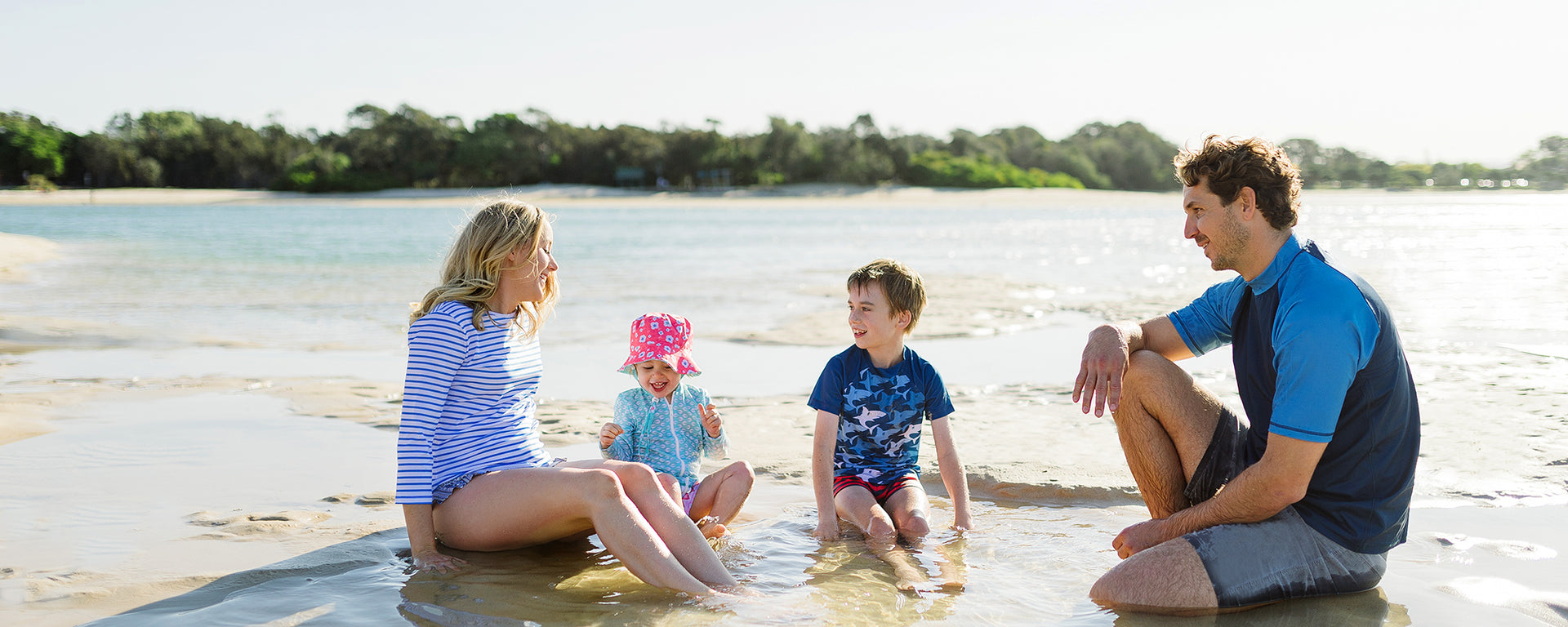
Summer Beach Safety Tips
Heading into the summer months millions of Australians will be heading to one of our 1200 glorious beach locations. With 258 rescues on Australia beaches already this season, it’s worth reminding ourselves of some basic tips to stay safe at the beach this year
Although Australian beaches may look amazing, they can be unpredictable and hide some dangers that every visitor should be aware of. Here are some tips to ensure you enjoy your visit to the beach and stay safe!
1. Always swim between the red and yellow flags
Always swim or surf at places patrolled by lifesavers. When you see red and yellow flags on a beach, it indicates that there is currently a lifesaving service operating on that beach. The lifeguards have chosen a section of the beach that is best for swimming and they will closely supervise this area. Lifeguards pay more attention to the area between the red and yellow flags than any other part of the beach
2. Read safety signs
Before you go into the ocean read the safety signs. This way you are aware of any warnings or dangers on the beach such as dangerous currents and blue bottles and jellyfish. Lifeguards are another great source of beach safety information.Lifeguards are highly trained and very knowledgeable about beach safety and conditions. When you arrive at the beach look for and identify the lifeguards. Feel free to ask them about the day’s conditions, as well any additional beach safety advice they might have for that specific beach – because every beach is different.
3. Always Swim with a Friend
To avoid trouble in water, always swim with a friend or family member so you can keep an eye out for each other. If you need a lifeguard’s assistance, raise your arm in the air and wave it from side to side. Save your energy by floating on your back and staying calm.
4. Blue bottle jellyfish stings
If stinging occurs, wash off the tentacles with water, or pick off with fingers. Place the affected area in hot water for 20 minutes. If you don’t have access to hot water a cold ice pack is also effective. Do not rub sand, pour soft drinks or urinate over the sting — it doesn’t work.
5. Rock Fishing
Rock fishing can be very dangerous. If heading out to fish always tell others about your plans and check the weather. Always wear a lifejacket and appropriate footwear. Try and fish in a group and plan an escape route in case you are washed in the water. Do not jump in if someone is washed in — use a rope or something that floats to rescue them. Call Triple Zero in an emergency.
6.Rip currents
Spot a rip by looking for deeper darker water, fewer breaking waves and sometimes sandy-coloured water. If caught in a rip, stay calm, float and raise an arm for attention. While floating, rips can flow in a circle and return you to shore. Or you may escape a rip by swimming parallel to the beach, towards breaking waves. Don’t struggle in a rip or you will become exhausted.
7. Stay Sun Safe
Remember to Slip, Slop, Slap and Slide at the beach this summer. Apply sunscreen at least 20 minutes before going into the sun and reapply regularly, particularly after swimming. Wear a rashie and hat for extra protection.
If you get sunburn drink a lot of fluids to avoid dehydration. If you have severe sunburn, with blistering and nausea, see a doctor.
8. Heat exhaustion
Heat exhaustion is relatively common with beachgoers, particularly the young and elderly. Physical activity and a lack of hydration can cause weakness, nausea, vomiting and light-headedness. To treat it, stop any activity and move to a cooler environment to rehydrate with water and sport drinks. Call Triple Zero in an emergency.
9. No alcohol
Don’t ever swim in the ocean when under the influence of alcohol or drugs. Alcohol and water don’t mix well
10. Cardio-Pulmonary Resuscitation
If you are caught without any assistance and must administer CPR follow DRSABCD:
Danger: Check for danger to yourself, the patient and bystanders,
Response: Check for response by talk and touch
Send: If unresponsive, send for help by calling Triple Zero
Airway: Open airway and ensure it is clear. If not roll patient onto their side to clear the airway.
Breathing: Check breathing. If patient is not breathing start CPR.
CPR: (30:2) Give 30 chest compressions followed by two rescue breaths. For downing – give two initial rescue breaths before starting compressions. Ensure the head is tilted back when giving breaths. Compressions should be a rate of 100-120 a minute in the centre of the chest. For infants do not tilt the head when doing breaths and use two fingers to compress chest.
Defibrillation: Attach an automated external defibrillator as soon as one is available. Continue CPR until the patient responds, it is impossible to continue, or until a professional arrives.
For more detailed information on how to stay safe at the beach this summer visit surflifesaving.com.au and beachsafe.org.au
INFORMATION SOURCED FROM: surflifesaving.com.au and beachsafe.org.au
